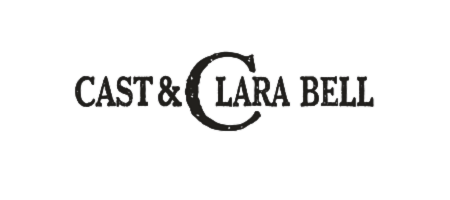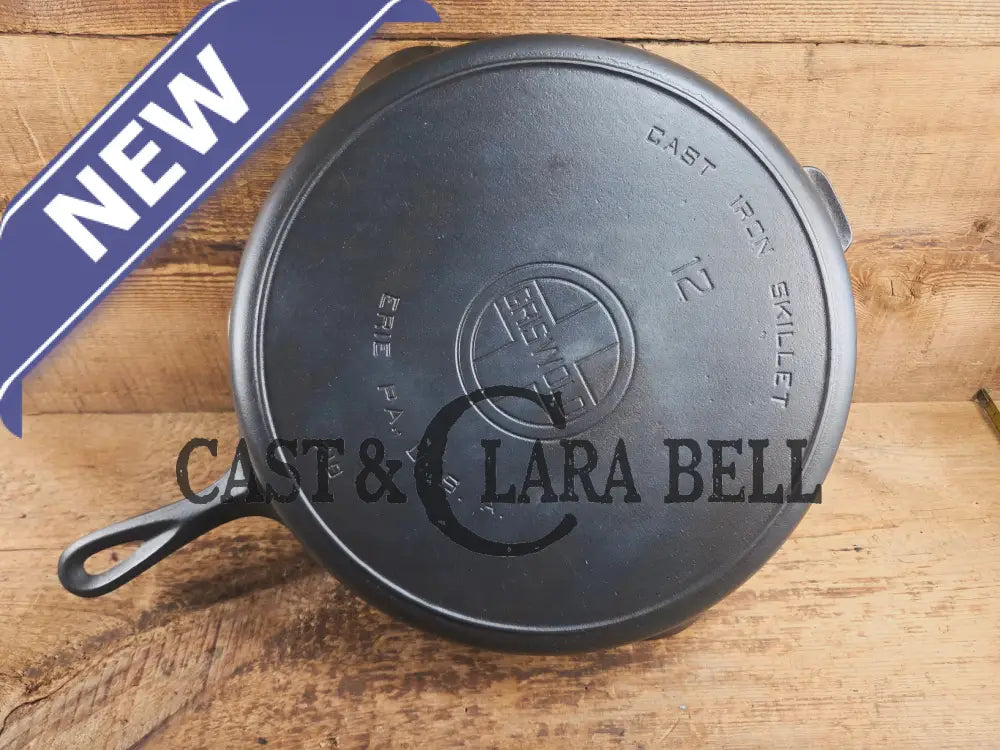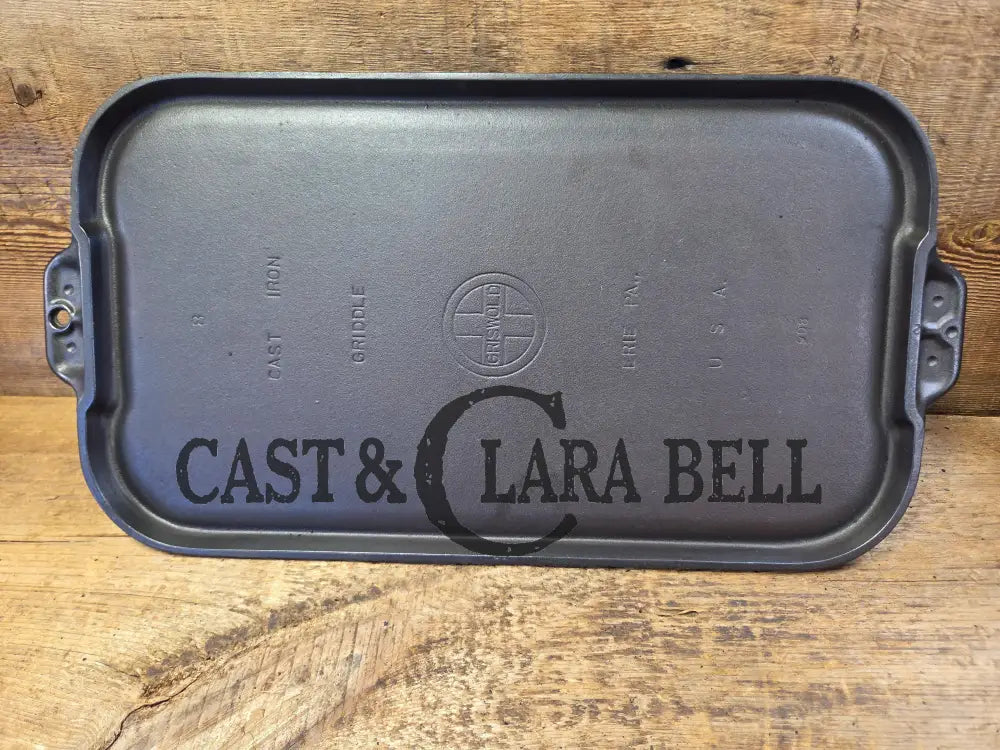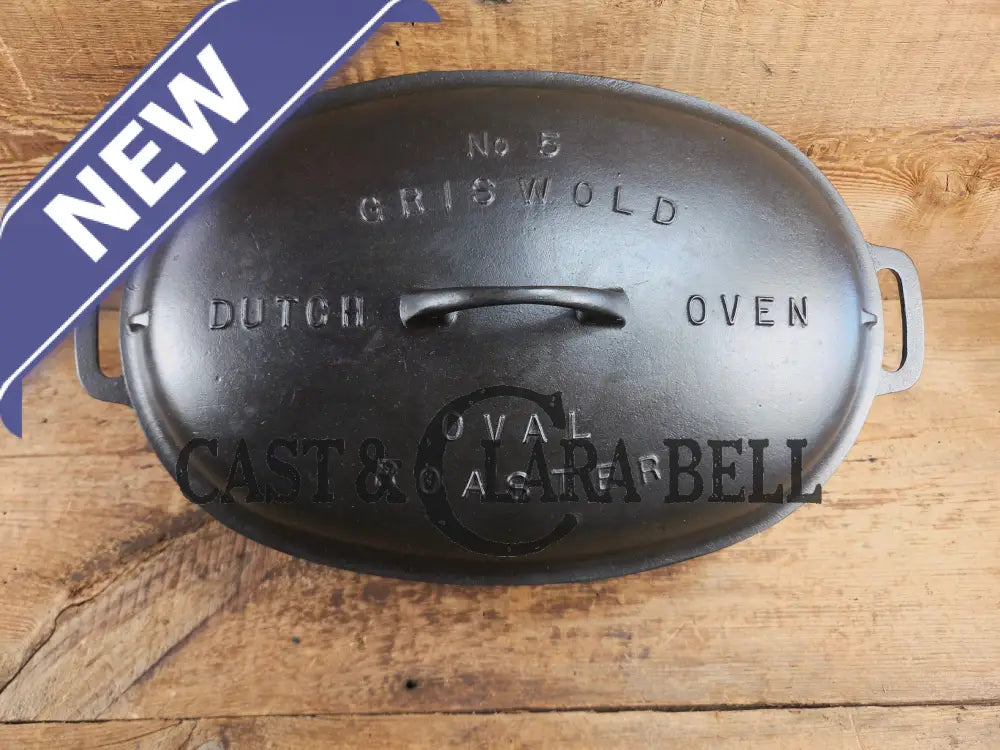Spotlight on Wagner Cast Iron
Appearance
Grade: A-
Wagner skillets were made from the 1890's until about 1950 (or so) when they were purchased by General Housewares Corp. We say "or so", because while there was a definitive sale date, the classic appearance and feel of the Wagner Cast Iron Skillet changed dramatically to a more mass manufactured and rough finish starting prior to sale. So while we know when they were acquired by GHC, its tough to say when the quality moved from handmade and lightweight to the more rough style.
The skillet styles of Wagner followed that of Griswold, first with heat rings that raised around the bottom rim of the pan, to the smooth bottom skillets that took over in the late 20's. The earliest Wagner skillets had just variations of the wordmark name, and the only real "logo" so to speak that Wagner adopted was the iconic "stylized logo" that says "Wagner Ware" and "Sidney", usually at the 12 Oclock position. While the logos aren’t as “flashy” as Griswold’s block or slant logos, many collectors love the understated, elegant look of Wagner’s script and arc logos. The earlier heat ring models — especially pre-1920s — have a classic, refined presence that displays just as nicely as it cooks. Wagner is by far the second most recognized brand in vintage cast iron. As for its workman-like appearance, Wagner is a dependable, easily identified brand that shows well hanging up on a baker's rack in your kitchen.
Design
Grade B+
Wagner skillets were known for consistency. There were only two essential designs in skillets for Wagner, the heat ring skillet and the smooth bottom. They are known for retaining their "swirls" on many pieces that are over a century old. As each piece was finished and ground by hand, it left a symmetrical series of etchings on the bottom, in a swirl pattern. Most pieces have an incredibly smooth interior finish and refined shaping, particularly in the heat ring and early smooth bottom models. Pattern flaws and casting errors are rare. The heat ring skillets are more often flat as the ring goes, holding well on glass cook tops. The smooth bottom skillets are more often known to have movement on them, meaning that they don't spin, but they will move when prompted. So while perfectly flat pieces are found regularly, it is more often that they move when prompted. This is NOT due to damage or handling issues, but are more pattern based. We surmise that 125 years ago it wasn't dreamt that cook surfaces could be made of induction glass! The handles on all Wagners are VERY ergonomic as well, making it great for hands of all sizes. We give the overall design a B+, which is only down from an A because of the frequency of the bottom curvature.
Weight
Grade A
Wagner skillets are lightweight compared to most modern cookware, and even slightly lighter than Griswold in many sizes. A typical #8 Wagner might weigh just under 3#, but some of the department store labels, like the National brand (made by Wagner) are around 2.5#. That means less strain on the wrist — one reason many home cooks reach for a Wagner as their daily user. The later patterns that were fashioned under the GHC umbrella were more hefty than the early hand made ones, but even the later ones are lighter than modern day Lodge. Often when someone asks for a lightweight option, we will direct them to these Wagners, especially the heat ring series. The heat ring series' feature a thin wall that is slightly higher than the smooth bottoms. We like the heat ring series' for larger volume cooking, but the smooth bottoms create a nice sear with a slightly thicker base. Wagner skillets are a very popular seller on our website.
Durability
Grade: B+
Early Wagner skillets (especially pre-1940s) were crafted with care and durability in mind. Thinner than modern pans but still sturdy, they’ve stood the test of time. Cracking can be more common in the heat ring series' but is less so than the early Erie and Griswolds. As we said about design, the smooth bottoms will be less likely to crack, but they are slightly heavier. Handle strength is generally very reliable. Overall they are just as durable as any cast iron brand. The key to durability is just taking care of it and making sure not to bang them around or drop them. Cast iron is as surprisingly delicate as it is durable over time.
Cooking Performance
Grade: A
Wagner skillets offer some of the best cooking performance in vintage cast iron. Their ultra-smooth interiors make for easy seasoning and fantastic non-stick results over time. The balance and handle design are ergonomic and comfortable. We use the thicker smooth bottoms for more searing and braising in the oven. For the slightly lighter weight option, we prefer the higher walls of the heat ring skillets.
Price
Grade: A
Wagner skillets offer a sweet spot for collectors and cooks. Often folks come to the idea of cast iron cooking through the Griswold funnel, but very often, the decide to give Wagner a shot. Many times this is because while they feature all of the positive points of a Griswold, they beat Griswold hands down on price. While earlier and rarer logos (like arc Wagner or Sidney O.) can fetch a premium, most Wagner skillets are more affordable than Griswold — often offering comparable quality at a better value. For those who want vintage performance without paying top-tier collector prices, Wagner is an excellent choice.
Summary
Wagner is often the cast iron choice for everyday cooks who want heritage, performance, and affordability all in one. While Griswold gets much of the collector hype, Wagner stands strong as a beautifully made, reliable skillet brand that still performs just as well today as it did 100 years ago. If you have any questions about whether Wagner is right for you, just send us an email at restore@castandclarabell.com!





